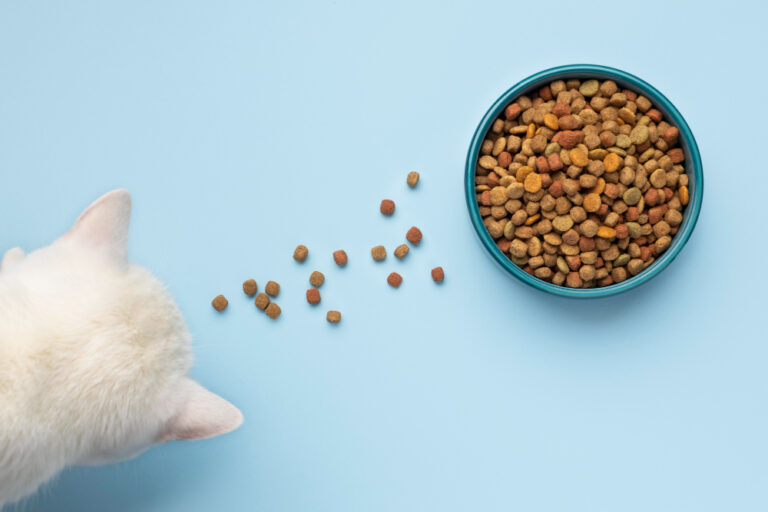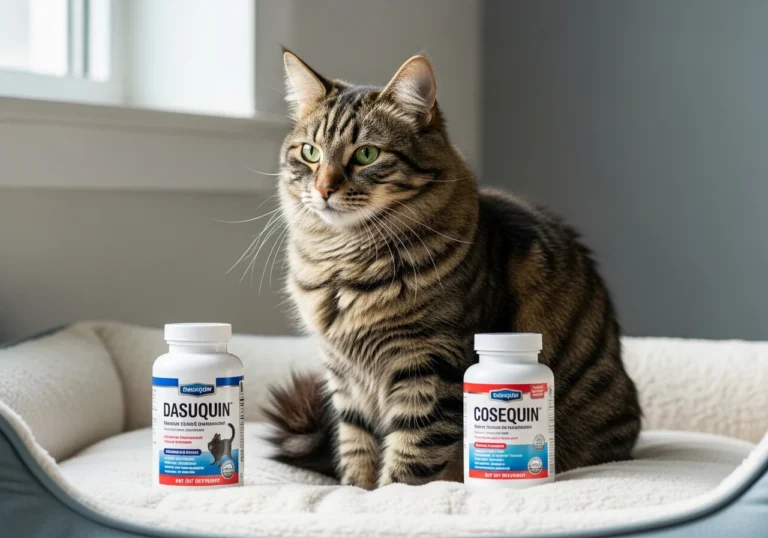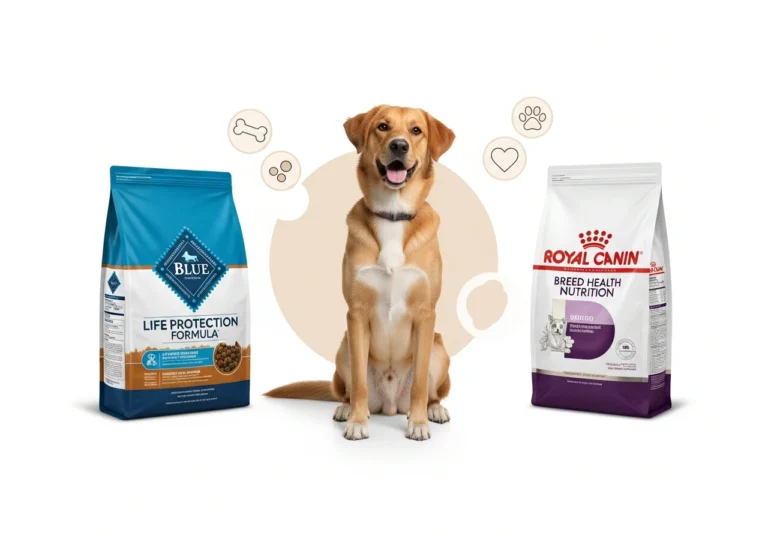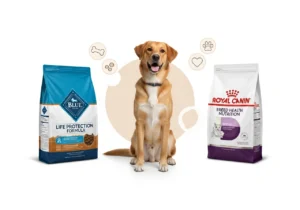If your dog is dealing with a sensitive stomach, you’re not alone. As a pet parent, few things are more frustrating—and heartbreaking—than watching your pup struggle with digestion issues. Maybe it’s frequent vomiting, loose stools, excessive gas, or just refusing their kibble altogether. The good news? With the right diet and a bit of trial and error, most dogs with sensitive stomachs can thrive and live comfortably.
Hi, I’m Jessica Morgan, pet care expert and TailWaves contributor. In this guide, I’ll walk you through what to feed a dog with a sensitive stomach, how to identify the right foods, and the kinds of ingredients (and products) to avoid. Whether you’re a first-time dog owner or a long-time pup parent navigating a new food intolerance, you’ll find actionable advice and product suggestions here—without the fluff.
Let’s dive into what’s actually happening inside your dog’s belly—and how we can help.
Understanding and Easing Digestive Discomfort
First, What Is a Sensitive Stomach in Dogs?
A “sensitive stomach” isn’t a medical diagnosis—it’s a catch-all term used when dogs show signs of digestive upset from their diet. Common symptoms include:
- Vomiting or regurgitation
- Diarrhea or loose stools
- Gas or bloating
- Loss of appetite
- Unusual lethargy after meals
Sometimes it’s due to food intolerance or allergies. Other times, it’s just poor-quality ingredients, stress, or even a sudden food switch.
According to the American Kennel Club (AKC) and VCA Animal Hospitals, the most common dietary culprits are:
- Low-quality protein sources
- Fillers like corn, soy, or wheat
- Artificial preservatives, colors, or flavors
- Sudden changes in diet
- Dairy or high-fat foods
What Types of Dog Food Are Best for Sensitive Stomachs?
1. Limited Ingredient Diets (LID)
These contain fewer components, reducing the risk of triggering sensitivities. You’ll often see just one protein and one carbohydrate source (e.g., salmon and sweet potato).
Real-world example: A French Bulldog named Rocky had persistent diarrhea and gas after meals. After switching to a limited ingredient lamb and brown rice formula, his digestion normalized in under a week.
Pros:
✅ Easier to pinpoint sensitivities
✅ Often uses novel proteins
✅ Good for allergy-prone dogs
Cons:
❌ Usually more expensive
❌ Can be limited in variety
Try this: Natural Balance L.I.D. Sweet Potato & Fish—great for fish-loving pups with skin and stomach issues.
2. Novel Protein Diets
Some dogs react to common proteins like chicken or beef. Novel proteins—such as venison, duck, or kangaroo—can be less reactive.
Product note: At TailWaves, we often recommend hypoallergenic treats with novel proteins for pups on sensitive diets.
Pros:
✅ Low allergenic potential
✅ Often more palatable for picky eaters
Cons:
❌ May be hard to source
❌ Takes time to see results
3. Hydrolyzed Protein Diets (Prescription)
For severe cases, your vet might recommend hydrolyzed diets—where proteins are broken down into tiny fragments that the immune system doesn’t recognize as threats.
Pros:
✅ Clinically effective
✅ Reduces inflammation in gut
Cons:
❌ Expensive
❌ Requires vet prescription
Home-Cooked or Raw Diets: Are They Better?
Homemade diets can help, but only if they’re nutritionally balanced. As a quick relief measure, you can try:
- Boiled white rice and lean turkey
- Canned pumpkin (pure, not pie filling)
- Probiotics or digestive enzyme powders
Tail tip: We offer digestive supplements and calming treats that can help ease transitions—browse TailWaves.com for curated options for sensitive tummies.
Ingredients to Look For (and Avoid)
Look for:
✅ Real named meats (like salmon or turkey)
✅ Easily digestible grains (rice, oats)
✅ Omega-3 fatty acids (great for gut and skin)
✅ Prebiotics and probiotics
✅ No artificial preservatives (like BHA, BHT)
Avoid:
🚫 By-products or mystery meat meals
🚫 Corn, soy, or wheat
🚫 High-fat foods
🚫 Dairy or spicy table scraps
In the next part, we’ll explore more detailed tips, product examples, and comparisons between top dog food brands—including dry vs. wet food, budget vs. premium picks, and how to transition safely without upsetting your dog’s gut.
Practical Feeding Tips, Product Comparisons & Transitioning Strategies
How to Transition Your Dog’s Diet Safely
Even the perfect food won’t help if you switch too fast. Dogs with sensitive stomachs need a gradual transition:
- Days 1-2: 75% old food + 25% new food
- Days 3-4: 50% old food + 50% new food
- Days 5-6: 25% old food + 75% new food
- Day 7: 100% new food
TailWaves Tip: Use probiotic chews or pumpkin powder during the transition for added digestive support.
Dry vs. Wet Food: Which Is Better?
Dry Food (Kibble)
Best for: Dogs who need dental support, weight control, or convenience
Examples:
– Hill’s Science Diet Sensitive Stomach & Skin
– Wellness Simple Limited Ingredient Salmon & Potato
Wet Food (Canned)
Best for: Dogs with poor appetite or hydration issues
Examples:
– Blue Buffalo Basics Turkey & Potato
– Royal Canin Veterinary Diet Gastrointestinal Low Fat
Freeze-Dried or Fresh-Frozen
Brands like The Farmer’s Dog, Ollie, and Stella & Chewy’s offer gently cooked or freeze-dried meals made with whole ingredients.
TailWaves Pick: Try our single-ingredient freeze-dried lamb or turkey treats—perfect for sensitive bellies.
Budget vs. Premium: Is Expensive Always Better?
Budget-friendly options:
– Purina Pro Plan Sensitive Skin & Stomach
– American Journey Limited Ingredient
Premium picks:
– Zignature LID
– Nom Nom Fresh Subscription Meals
Real-Life Story: Murphy’s Sensitive Journey
Murphy, a 5-year-old Golden Retriever, had gas and soft stools since puppyhood. After switching to salmon & brown rice kibble plus probiotic chews, his digestion normalized, and his energy returned.
Additional Tips to Support Digestive Health
- Use elevated bowls to prevent bloating
- Slow feeder bowls reduce gulping
- Calming aids (treats, beds, toys) reduce anxiety
Explore on TailWaves.com: From raised bowls to digestive supplements, we’ve curated what your sensitive dog needs.
FAQs
Q: Can I give my dog human food if they have a sensitive stomach?
A: Yes, in moderation. Use plain, bland options like boiled chicken, rice, pumpkin—never spicy or fatty foods.
Q: How long should I try a new food before deciding if it works?
A: Give it 2–3 weeks unless your dog has an immediate bad reaction.
Q: Should I add supplements to their diet?
A: Yes, many dogs benefit from probiotics or digestive enzymes. Always check with your vet first.
Final Thoughts
Feeding a dog with a sensitive stomach can be a challenge—but with the right food, a slow transition, and a little patience, most pups bounce back stronger than ever. You don’t have to go it alone. At TailWaves, we’re here to support pet parents like you with curated products and trusted advice.
Got questions? Reach out to us or explore our collection designed for dogs with special dietary needs.
For ready product recommendations, read our best grain-free foods for sensitive stomachs list.











2 Comments